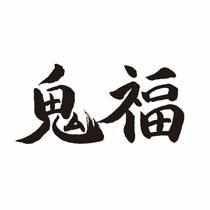

Bring Good Luck from Japanese Folklore into Your Life
Aichi-Chubu

Area
The diverse beauty and riches of Mikawa
Onifuku is located near the region of Mikawa in the central area of Aichi Prefecture. The historic beauty of this region has been depicted in a well-known woodblock print from “The Famous Scenes of the Sixty States,” showing high mountains, green forests and blue streams leading to a high mountain temple.
Hidden beneath the surface of this beautiful landscape has been an abundance of high-quality clay, leading to a thriving roof tiles industry (kawara). And the Yahagi River, which flows more than 100 km from Nagano Prefecture to Mikawa Bay, offered convenient riverside clay beds and also enabled easy transport of kawara products to majors ports for onward shipping to customers.

History
Ensuring a future for Japanese folklore
Onigawara literally means demon (oni) roof tile (kawara). These demon roof tiles are positioned on a roof with the physical goal of preventing rainwater from leaking into the building and the spiritual goal of keeping evil spirits away. Sanshu Onigawara is a particular style that started in the Mikawa region during the early 1700s and was initially used mainly in castles, shrines and temples. Over time, it also became popular for residences, and in November 2017, the Government of Japan recognized Sanshu Onigawara tiles as a traditional craft.
Onifuku was established in 1916 by Fukumatsu Suzuki and was initially known as “Onigawara Fukumatsu.” The company has been purely focused on the production of Sanshu Onigawara roof decorations throughout its long 100-year history. More recently, however, the declining demand for tiled roofs pushed Onifuku to explore new avenues for keeping onigawara traditions and craftsmanship alive. This has led to the development of stylish household items that bring onigawara products into our daily lives.

Characteristic
Traditional techniques for a modern design
A striking feature of Sanshu Onigawara is its distinctive gray color from a process known as smoking. After the clay is fired to a temperature of 1,100℃, gas is injected into the kiln, creating smoke that forms a carbon film on the surface of the clay. The film is a rich gray metallic color described as smoked silver or “ibushi-gin.” Afterward, the onigawara is hand polished using a metal spatula to create a slight gloss on its natural surface. The resulting color is a soft shade that calmly blends into its surroundings and yet also stands out from the background.
The natural texture is another attractive trait of Sanshu Onigawara. Glazed ceramics, including most tableware, usually has a shiny surface that feels smooth and slippery to the touch. Unglazed ceramics, like onigawara, have a natural surface that feels smooth but slightly textured, like a weathered stone found along the beach. And because it’s not protected by a glaze, onigawara clay easily absorbs water and oils from your hands. Over time the color will darken and the texture will change as though it’s living through time.
These unique characteristics result from the skills and techniques of the craftsmen at Onifuku, known as “oni-shi.” Sanshu Onigawara is handmade by oni-shis, who use traditional methods from initial design through carving, firing and polishing. Their ability to carve in three dimensions adds depth to the onigawara and creates a broad range of scary facial expressions.

For Customers
Enjoy a unique blend of humor and tradition
Embrace the onigawara tradition with a unique Sanshu Onigawara tissue box. The “smiling onigawara” has a cheerful appearance suggested to attract good fortune. On the other hand, the “glaring onigawara” has a frowning appearance intended to scare away evil spirits. Both styles bring a distinctive character to any interior decor with their offbeat design, rich color and natural texture. And rest easy - tissues can be taken from either the left nostril or right nostril - you can choose!
Both styles reflect a fun, modern theme of “tradition x humor” from Onifuku that is guaranteed to attract a second glance and leave a smile on the face of your friends or your customers. The biggest challenge may be deciding where to display this functional artwork to create the strongest impact. Consider the main entrance, powder room, or guest bedroom if you’re entertaining friends at home. And consider the reception desk, bar counter or waiting area if you’re welcoming customers at a restaurant or cafe.
Sanshu Onigawara tissue boxes also make memorable gifts. The smiling onigawara attracts good fortune, making it an ideal graduation gift or wedding present. And the glaring onigawara will surely be appreciated as a thoughtful housewarming present that protects against evil spirits.
Award
1980 Naritasan Shinshoji Sanmon
1985 Izumo Taisha Soreiden
2016 Eiheiji Nagoya Betsuin Main Hall






